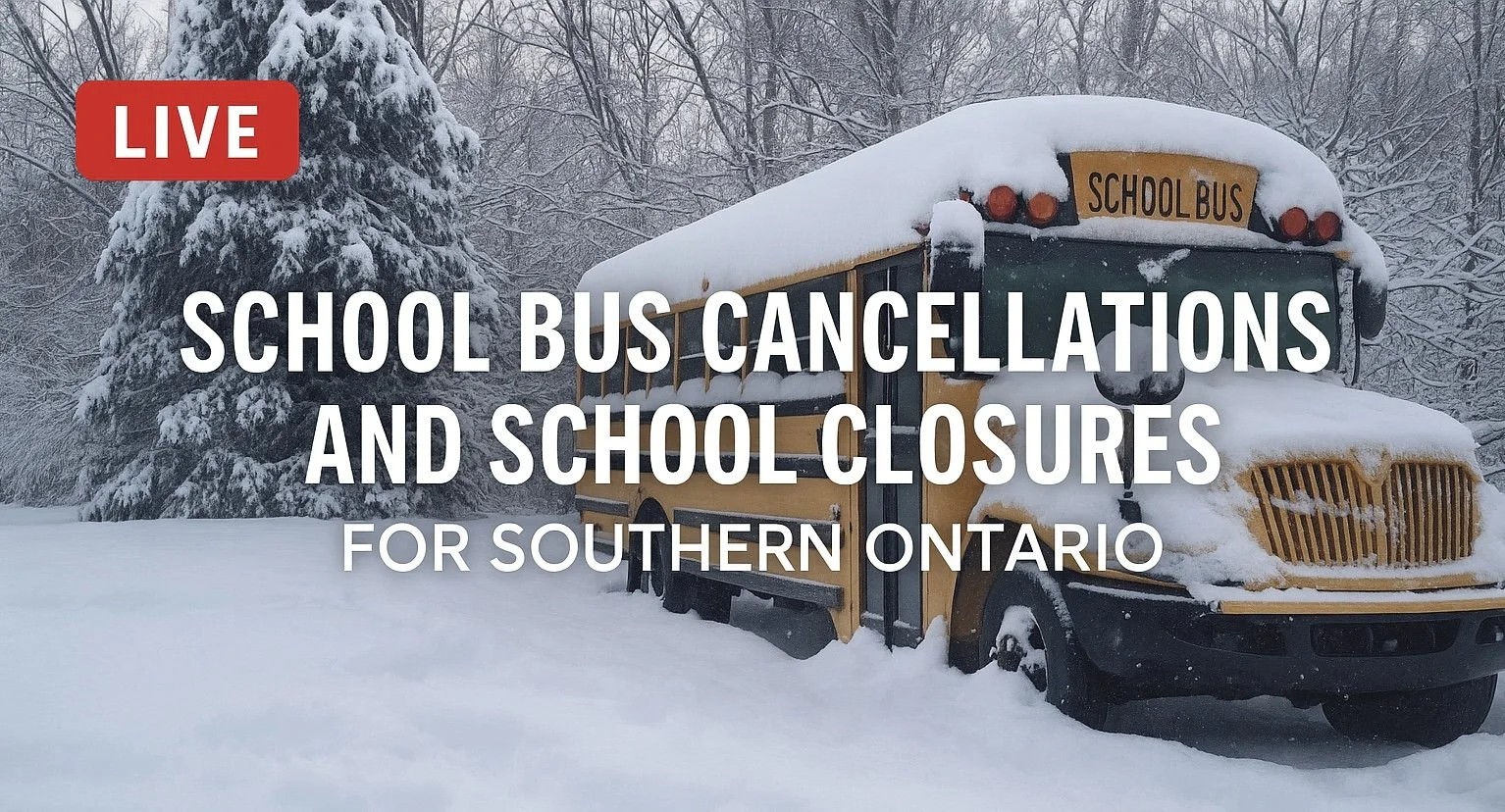Heavy Snow Could Impact New Year’s Eve Celebrations in Southern Ontario With Up to 10-20cm of Snow
/After a brief return to milder weather accompanied by heavy rain to cap off the final weekend of the year, a snowy blast is on the horizon to kick off the first few days of 2025.
A system is expected to move into Southern Ontario starting Tuesday afternoon, bringing a mix of precipitation that will gradually transition to snow as we ring in the New Year at midnight. For those heading out to celebrate New Year’s Eve, road conditions may become hazardous, particularly later in the evening as temperatures drop below freezing.
Snowfall is expected to continue throughout New Year’s Day on Wednesday, with the heaviest accumulation focused on parts of Central and Eastern Ontario. By the time the snow tapers off late Wednesday, some areas could see snowfall totals nearing 10 to 20 cm in the hardest-hit regions.
In the wake of this system, frigid Arctic air is set to return, dominating the weather pattern for at least the first week of 2025. With the Great Lakes still largely unfrozen, the lake-effect snow machine is expected to roar back to life, potentially resulting in a multi-day snow squall event.
Starting Thursday and continuing into the weekend, some areas in the traditional snowbelt regions near Lake Huron and Georgian Bay could see significant snowfall, with totals approaching 50 cm by the end of the weekend.
PRECIPITATION TYPE - MAP FROM WEATHERBELL
The New Year’s Eve system is forecast to bring the first scattered bands of precipitation into the region from the south and west during the early to mid-afternoon hours on Tuesday. Areas in Deep Southwestern Ontario and near the Lake Erie shoreline will be affected first, with the precipitation gradually spreading across Southern Ontario by the dinner hour.
At this time, most regions are expected to hover near or just above the freezing mark, particularly in the Golden Horseshoe, where temperatures are likely to range between 3 and 5°C. As a result, the precipitation will likely begin as scattered rain or drizzle in many areas.
However, higher elevations northwest of the Greater Toronto Area (GTA) and into Central Ontario may see a mix of rain, ice pellets, and wet snow as temperatures there will be closer to freezing.
PRECIPITATION TYPE - MAP FROM WEATHERBELL
By the evening, the heaviest precipitation is expected to be concentrated east of Lake Huron, extending into Central Ontario. This will increasingly fall as wet snow as temperatures cool. Meanwhile, regions near the shores of Lake Ontario and Lake Erie will see less sustained precipitation, with rain continuing to dominate, especially near the lakeshore.
As the clock strikes midnight to welcome the New Year, heavy snow will continue in Central & Southwestern Ontario, while moderate to heavy rain will likely persist along the Lake Ontario and Lake Erie shorelines, dampening New Year’s Eve celebrations in the GTA and Niagara region.
PRECIPITATION TYPE - MAP FROM WEATHERBELL
Overnight, the precipitation is expected to transition to heavy, wet snow across most areas as colder air moves in behind the system. However, areas close to the Lake Ontario shoreline, including Hamilton, Toronto, and Kingston, may continue to experience rain into the early hours of Wednesday. Wet snow may mix in later in the morning, but periodic rain is likely as temperatures hover near freezing throughout Wednesday afternoon.
Moderate to heavy snow is forecast to persist through Wednesday in Eastern and Central Ontario, tapering off in Southwestern Ontario by the evening. In Eastern Ontario, steady snow could continue past midnight, finally ending early Thursday morning. Some lake-effect snow may develop off Lake Huron and Georgian Bay as early as Thursday morning.
Snowfall totals are challenging to predict for this system due to temperatures hovering close to freezing, which could significantly impact snow accumulation. A slight shift in temperatures could cause the system to overperform or underperform expectations.
The highest snowfall totals are expected in higher elevations of Central and Eastern Ontario, including Sundridge, Huntsville, Algonquin Park, North Bay, Deep River, and Bancroft. These areas could see between 10 and 20 cm of fresh snow by Thursday morning.
A wide swath of Southern Ontario, including much of Eastern Ontario, the Lake Simcoe region, and parts of Southwestern Ontario, is forecast to receive between 5 and 10 cm of snow. Localized areas may exceed 10 cm and approach 15 cm.
Around 2 to 5 cm of snow is expected for Ottawa, Brockville, Kingston, Belleville, and the northern GTA (away from the shoreline), where mixing will reduce overall snowfall amounts.
Limited accumulation is expected near the shorelines of Lake Ontario and Lake Erie, as well as in Deep Southwestern Ontario, including Windsor and Chatham, where temperatures will likely remain too mild for significant snow accumulation.
After the system snow, attention will shift to the risk of snow squalls beginning Thursday and lasting several days into the weekend. Snow squalls are highly localized events, often producing intense snowfall within narrow bands only a few kilometres wide which can make it hard to pinpoint exactly who will see the worst conditions.
Current models suggest a dominant northwesterly wind direction for much of this period, historically favouring heavy snowfall in parts of Grey and Bruce counties off Lake Huron. Squalls off Georgian Bay are expected to target Simcoe County (Midland, Orillia, Barrie), Muskoka (Bracebridge, Gravenhurst), and the Kawartha Lakes region.
Locations such as Orillia, Midland, Wasaga Beach, Wingham, Mildmay, Hanover, Chatsworth, Owen Sound, and Flesherton could see up to 50 cm of snow by the end of the weekend. However, not all areas will experience these extreme totals due to the localized nature of snow squalls.
Stay tuned for updates as higher-resolution models provide more precise forecasts. For now, be aware that travel in snowbelt regions could be significantly impacted starting Thursday, with the potential for rapid snowfall accumulation and blowing snow leading to near-zero visibility and possible road closures.










